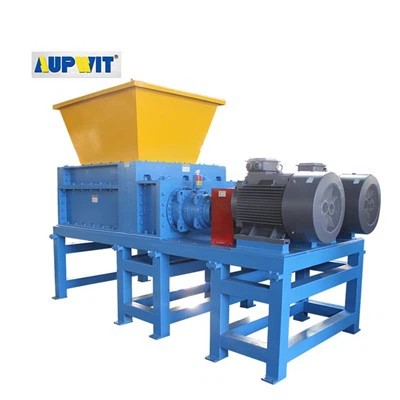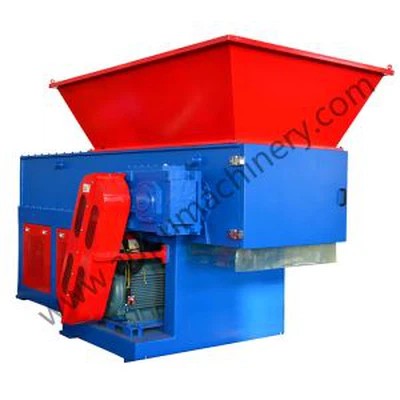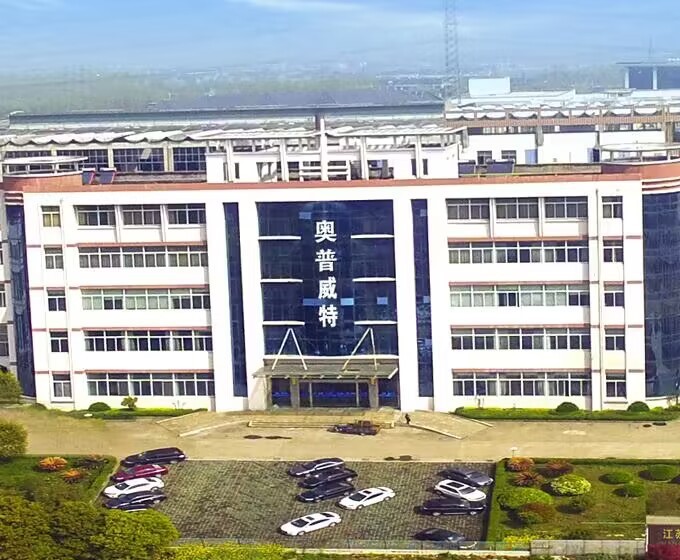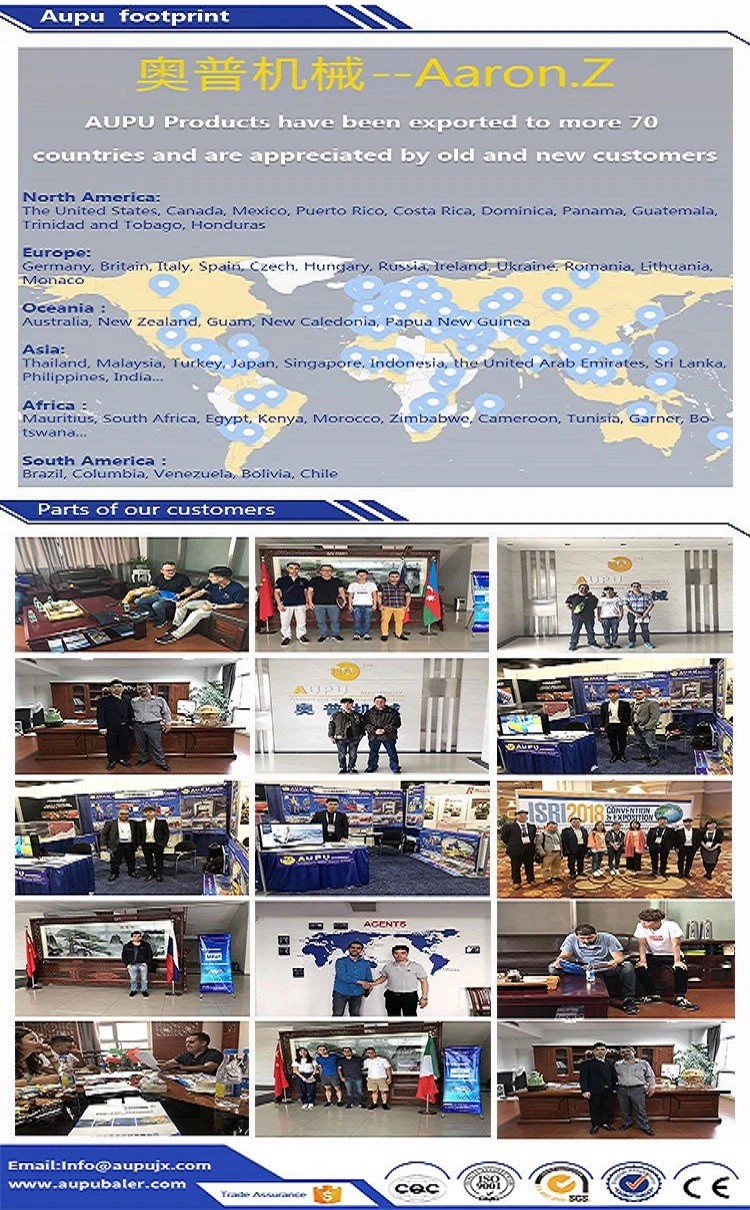Shredder and Crusher
What Is a Shredder
A shredder is a device designed to cut or shred materials into smaller pieces. Although many online sources refer to shredders primarily as tools for shredding documents to protect privacy and prevent identity theft, these machines come in various types tailored to different materials and applications.
Shredders are engineered to handle a variety of materials for different recycling applications. These include plastic recycling, scrap metal processing, e-waste management, wood recycling, and tire shredding or recycling.
The shredding operation produces raw materials to be re-introduced into manufacturing, as well as complete products like landscape mulch. Many terminologies are utilized to describe size reduction machines, including grinders, granulators, chippers, and hammer mills. Overall, their main purpose is to reduce the size of a given material.
Why Choose Us?
Quality Control
Our company has been through professional quality system certification, CE certification, SGS audit and as a member of the China national resources recycling association.
High Quality
Machine main core parts, use Germany Siemens motor, France Schneider electric, USA KK pressure gauge, USA parker valve, Germany Rexroth valve, Pikes high-pressure hose. Technology and performance of our products has reached the industry leading level, and has won the trust of the customers.
Professional Team
Our company is a professional design and manufacture company of hydraulic machinery. We are a backbone company in manufacturing all kinds of hydraulic equipment and metal machineries in domestic.
Global Shipping
Our products have been exported to more than 40 countries, such as Russia, Australia, USA, UK, Germany, Ukraine, Iran, Romania, Hungary, Mexico, Brazil, Chile, Canada, Spain, Colombia, etc. We have agents in the USA, Australia, Singapore, Kuwait, Russia.
-
Portable Shredding SystemWe uses its experience and success to continually improve the design and manufacturing of our tire recycling systems to make them more effective and efficient throughout the reduction process. New Portable Shredding System for sale,If you also need a Mobile tire shredder, feel free to contact us...read more
-
Four Shaft Shredder MachineA four-shaft shredder machine is a powerful machine used for various industrial applications. Its primary purpose is to shred and reduce the size of different materials, such as plastics, metals, tires, wood, and more...read more
Types of Shredder
There are several types of shredder machines available, each designed for specific materials and applications. Here are some of the most common types of shredder machines:
● Paper shredder machine: These are designed to shred paper into small pieces for secure disposal or recycling. They come in various sizes, from small office shredders to large industrial machines.
● Plastic shredder machine: These machines are used to shred plastic waste into small pieces, making them easier to recycle or dispose of. A variety of plastic materials, such as PVC, PET, and HDPE, can be processed by them.
● Wood shredder machine: These machines are used to shred wood waste, such as pallets and lumber, into smaller pieces for recycling or disposal. They are commonly used in the woodworking and construction industries.
● Metal shredder machine: These machines are designed to shred metal waste, such as scrap metal, into smaller pieces for recycling. They can handle various types of metal, including steel, aluminum, and copper.
● Tire shredder machine: The tire recycling industry frequently utilizes shredder machines to break down old tires into smaller pieces, which can then be disposed of or recycled.
● Twin-shaft shredder machine: These machines have two interlocking shafts with multiple blades or cutters, making them more efficient at shredding tough materials, such as metal and wood.
● Industrial shredder machine: These machines are designed for heavy-duty applications, such as shredding large volumes of waste or recycling materials. They are commonly used in waste management, recycling, and manufacturing industries.

The first thing in getting your Shredder jobs done right is to know what type of industrial shredder you need.
There are many different ways to shred material. Here are a few:
● Grinders: The most thorough way to shred materials is to put it through a shredder. Whatever you put into this shredder comes out the other end as dust.
● Strip-cut: These shredders cut the material into even, rectangular sheets.
● Cross-cut: This type of shredder will cut the material twice. It generally starts with a strip cut and then finishes with a horizontal cut. Depending on the type of blades the shredder has, the resulting particles will be square- or diamond-shaped.
● Particle-cut: This shredder cuts in pretty much the same way as a cross-cut shredder, but the shape of the resulting particles will be even more specific
Other ways to shred include micro- and crypto-cuts.
An industrial shredder has the ability to cut just about any material you put into it. However, when it comes to finding the right one, you need to consider what your specific needs are.
The Gradual Process of Shredding Metal with a Shredder
● A shredder is fed with the material that needs to be processed through its hopper (where the scrap metal is dropped in from the top), some systems feature a conveyor belt.
● In a typical paper shredder, the paper is seized by the blades and forced through the knives or cutters. Industrial shredders can forcefully shred a car, making the process a little more difficult. In either situation, the cutting mechanism grabs the material, dragging it through the rotating blades to chop it into smaller pieces. Depending on the metal being shredded and its design, the material is cut into various sizes as it moves through the shredding machine. A secondary shredder or granulator machine may be used with some materials to reduce a particle's size further.
● Sizing or discharge screens are used to sort materials and send oversize bits back through the cutting blades in order to reduce material to a predetermined size with bulk shredders. Screens come in a wide range of sizes and are made to accommodate the type of metal. The cutter is designed only to work when the screens are properly aligned. Air, ballistic devices, over-belt magnetics, and eddy current separators trap pollutants, including sand, stones, glass, ceramics, and metals, that are trapped and removed during the screening process.
● Each type of shredding mechanism, shredded material, and intended use of the particles collected requires a particular method for collecting the shredded materials. A conveyor system is sometimes employed to gather the materials used as raw materials for recycling. The shredding procedure aims to avoid the disposal of recyclable materials in landfills and prepare them for remanufacturing.
Components of Shredder
Feed Hopper: This is the entry point where materials are loaded into the shredder. For heavy-duty machines, the hopper is typically large and robust to handle bulky items.
Cutting Mechanism: Blades/Cutters: Made from high-strength steel, the blades are designed to cut through tough materials. The configuration and number of blades can vary depending on the intended use.
Rotors: These are the moving parts to which the blades are attached. Heavy-duty shredders often feature dual or quad rotors for enhanced cutting efficiency.
Motor: A powerful motor drives the cutting mechanism. Heavy-duty shredders may have motors with power ratings from 50 HP to several hundred HP, depending on the capacity and materials to be processed.
Control System: Modern shredders are equipped with sophisticated control systems for monitoring and adjusting the operation. This can include touchscreen interfaces, PLC (Programmable Logic Controllers), and safety interlocks.
Frame and Housing: The structure that supports all components. For heavy-duty applications, the frame is made from thick steel to withstand the forces involved in shredding tough materials.
Output Conveyor: After shredding, the processed material is often conveyed away from the machine for further processing or storage.
Benefits of Crushers in Recycling Businesses
Despite there being a range of different recycling crushers, the benefits are all similar in that they help streamline the waste management process that they are being utilised for.
Efficiency and productivity
Crushers significantly increase the efficiency and productivity of recycling operations. They allow for the quick and effective breakdown of waste materials, reducing the time and effort required for waste processing.
Waste volume reduction
By shredding waste materials into smaller pieces, crushers significantly reduce the volume of waste. This reduction in volume translates to lower storage costs and more space on the operation floor.
Transportation
By shredding waste, recycling businesses can also save on transportation costs. They are able to fit more waste into a transportation single load, which reduces fuel consumption, labour costs and the number of required journeys.
Material separation
Some crushers are equipped with advanced systems that can separate different materials during the shredding process. This feature is particularly useful in the recycling of electronic waste, where valuable metals can be separated and recovered.
Preparation for further processing
Shredded materials are easier to process further. For instance, shredded plastic can be easily melted and remoulded into new products, while shredded paper can be more efficiently pulped for recycling.
Environmental conservation
By facilitating the recycling process, crushers contribute to environmental conservation. They help reduce the amount of waste that ends up in landfills and promote the reuse of materials, thus conserving natural resources.
Shredders can be classified by their structure, such as single shaft shredder or double shaft shredder. The shredded material is fed into the machine either through a hopper or a conveyor.
The blades of the shredder grab the material and pull it through, cutting the material. The shredder cuts the material into different shapes, depending on the material and the design of the shredder.

What Is the Role of Shredder in Recycling and Waste Management
Shredding systems are typically employed for the size reduction of a given material. A shredder is mostly defined as a device for shredding documents but there are many types of shredders based on the material that needs to be processed.
Designed to facilitate a material reduction in a wide range of recycling applications, shredders efficiently support the recycling of plastic, e-waste, scrap, tire, and wood. The raw material produced during the shredding process can be re-used during various manufacturing processes and also for the production of finished materials like landscape mulch. Shredders are also known as granulators, grinders, hammer mills, and chippers but their main function remains the same – reducing the size of different materials.
In the waste management industry, shredders are employed in large-scale disposal systems used by recycling units and municipal facilities. From asphalt and rubber to plastics and wood, shredders efficiently compact large volumes of waste to a mere fraction of their actual size in minutes. When used at landfills, these shredders significantly reduce the waste volume and also accelerate the decomposition of biodegradable waste.
In today's eco-conscious business environment, shredders present an excellent opportunity for businesses looking to cut costs. Shredders used in the recycling processes not only reduce material volume but also reduce transportation and storage costs.
Shredders are available in a choice of high-torque, low-speed machines that efficiently minimize issues like embedding metal parts into plastic materials during the shredding process. From shredding smaller items to reducing the size of large industrial parts, a variety of shredding machines are available to ensure maximum material recovery.
Our Factory
Our company has been through professional quality system certification, CE certification, SGS audit and as a member of the China national resources recycling association.
Machine main core parts, use Germany Siemens motor, France Schneider electric, USA KK pressure gauge, USA parker valve, Germany Rexroth valve, Pikes high-pressure hose. Technology and performance of our products has reached the industry leading level, and has won the trust of the customers.
Our company is a professional design and manufacture company of hydraulic machinery. We are a backbone company in manufacturing all kinds of hydraulic equipment and metal machineries in domestic.
Our products have 13 series, a total of more than one hundred varieties, including Y81 series hydraulic metal baling machine, Y82 series non-metal hydraulic baling machine, Y82 series scrap tire baling machine, Y83 series hydraulic scrap metal briquetting press, HBS series large shearing baler, Q43 series crocodile hydraulic shears, Q15 series gantry plate shears, Y32 series four-column hydraulic press, EPM series automatic waste paper baler, KSB series waste shredder and so on.
Our products have been exported to more than 40 countries, such as Russia, Australia, USA, UK, Germany, Ukraine, Iran, Romania, Hungary, Mexico, Brazil, Chile, Canada, Spain, Colombia, etc. We have agents in the USA, Australia, Singapore, Kuwait, Russia.
Consecutive sales increasement of 10 years.




FAQ
Q: How does a shredder work?
Q: How is a shredder different from a metal briquetting machine?
Like shredders, briquetters can be integrated into an existing production process easily.
The demand for metal briquetting is growing—and because of that, we're getting more questions about shredders, too.
Q: How shredders and metal briquetters work together?
shredders reduce volume.
Metal briquetters create value.
Shredders and briquetters can be designed to operate together and integrated into an existing production line. This duo smashes and saves—streamlining volume reduction and producing a sellable product.
Q: Do you need a briquetting machine if you have a shredder?
Q: How to service a shredder?
Oil the blades regularly.
Clean out the blades.
Wipe down your machine.
Q: Is it better to oil or lubricate shredder sheets?
Q: What can shredder shred?
Q: What happens if you don't oil your shredder?
Q: What are common shredder problems?
The shredder won't operate – at all.
The machine suddenly stops in the middle of a job.
There's a paper jam.
The shredder makes too much noise.
The device won't take in any paper – at all.
Q: Can staples go through shredder?
Q: What is the average lifespan of a shredder?
Q: What causes shredder to stop working?
Q: Can industrial shredders handle paper clips?
Q: What can an industrial shredder shred?
Q: Are shredder lubricant sheets necessary?
Q: How powerful is a shredder?
Q: How does shredder affect the environment?
Q: Can you burn out a shredder?
Q: How often should you lubricate a shredder?
We're well-known as one of the leading waste baler manufacturers and suppliers in China. If you're going to buy high quality waste baler made in China, welcome to get more information from our factory.



